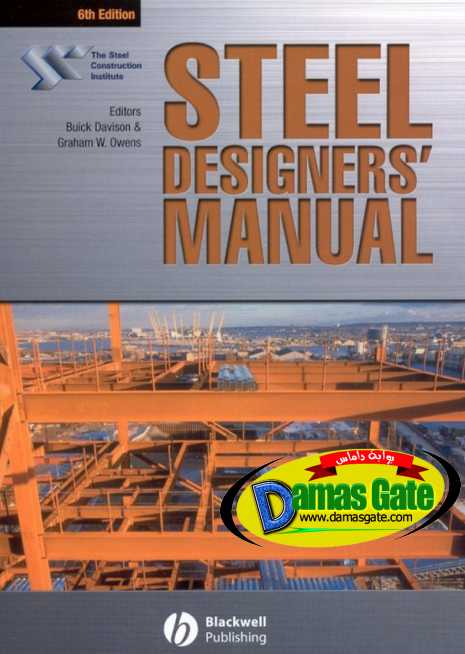Steel Designer's Manual, 6th Edition
Publisher: Blackwell Publishers -- 1328 pages -- May 2003 -- ISBN 0632049251 -- PDF -- 10 MB
This classic manual on structural steel design provides a major source of reference for structural engineers and fabricators working with the leading construction material. Based fully on the concepts of limit state design, the manual has been revised to take account of the 2000 revisions to BS 5950. It also looks at new developments in structural steel, environmental issues and outlines the main requirements of the Eurocode on structural steel.

Introduction to sixth edition
At the instigation of the Iron and Steel Federation, the late Bernard Godfrey began
work in 1952 on the ï¬پrst edition of the Steel Designers’ Manual. As principal author
he worked on the manuscript almost continuously for a period of two years. On
many Friday evenings he would meet with his co-authors, Charles Gray, Lewis Kent
and W.E. Mitchell to review progress and resolve outstanding technical problems.
A remarkable book emerged. Within approximately 900 pages it was possible for
the steel designer to ï¬پnd everything necessary to carry out the detailed design of
most conventional steelwork. Although not intended as an analytical treatise, the
book contained the best summary of methods of analysis then available. The standard
solutions,
influence lines and formulae for frames could be used by the ingenious
designer to disentangle the analysis of the most complex structure.
Information
on element design was intermingled with guidance on the design of both overall
structures and connections. It was a book to dip into rather than read from cover
to cover. However well one thought one knew its contents, it was amazing how often
a further reading would give some useful insight into current problems. Readers
forgave its idiosyncrasies, especially in the order of presentation. How could anyone
justify slipping a detailed treatment of angle struts between a very general discussion
of space frames and an overall presentation on engineering
workshop design?
The book was very popular. It ran to four editions with numerous reprints in both
hard and soft covers. Special versions were also produced for overseas markets.
Each edition was updated by the introduction of new material from a variety of
sources. However, the book gradually lost the coherence of its original authorship
and it became clear in the 1980s that a more radical revision was required.

Introduction to sixth edition
At the instigation of the Iron and Steel Federation, the late Bernard Godfrey began
work in 1952 on the ï¬پrst edition of the Steel Designers’ Manual. As principal author
he worked on the manuscript almost continuously for a period of two years. On
many Friday evenings he would meet with his co-authors, Charles Gray, Lewis Kent
and W.E. Mitchell to review progress and resolve outstanding technical problems.
A remarkable book emerged. Within approximately 900 pages it was possible for
the steel designer to ï¬پnd everything necessary to carry out the detailed design of
most conventional steelwork. Although not intended as an analytical treatise, the
book contained the best summary of methods of analysis then available. The standard
solutions,
influence lines and formulae for frames could be used by the ingenious
designer to disentangle the analysis of the most complex structure.
Information
on element design was intermingled with guidance on the design of both overall
structures and connections. It was a book to dip into rather than read from cover
to cover. However well one thought one knew its contents, it was amazing how often
a further reading would give some useful insight into current problems. Readers
forgave its idiosyncrasies, especially in the order of presentation. How could anyone
justify slipping a detailed treatment of angle struts between a very general discussion
of space frames and an overall presentation on engineering
workshop design?
The book was very popular. It ran to four editions with numerous reprints in both
hard and soft covers. Special versions were also produced for overseas markets.
Each edition was updated by the introduction of new material from a variety of
sources. However, the book gradually lost the coherence of its original authorship
and it became clear in the 1980s that a more radical revision was required.
DOWNLOAD
*
*